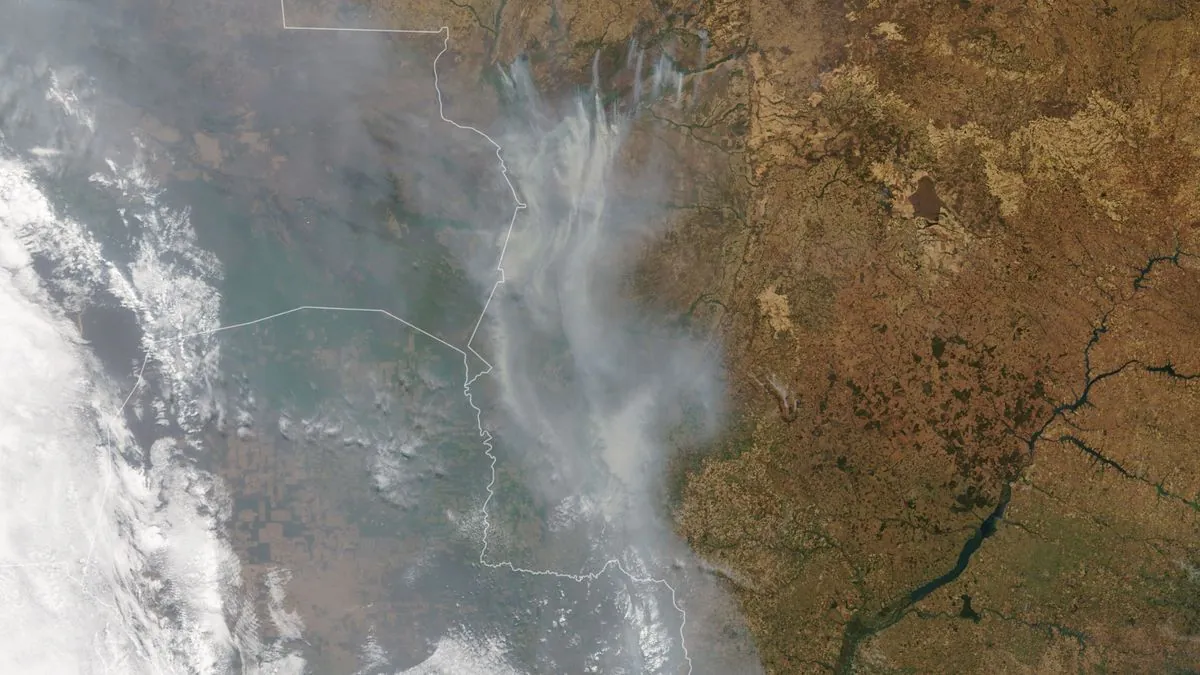Brazil Grapples with Unprecedented Drought Amid Climate Crisis
Brazil faces its worst drought on record, affecting 59% of the country. Climate change and deforestation disrupt crucial "flying rivers," intensifying water scarcity across multiple regions.

Brazil, the largest country in South America, is currently experiencing its most severe drought on record, according to the Center for Natural Disaster Monitoring and Alerts. This environmental crisis has affected approximately 59% of the nation's territory, impacting over 1,400 cities across various regions.
In the northern part of Brazil, the drought has left numerous communities isolated, as dried-up rivers have rendered boat-only accessible areas unreachable by water. The central-west region is witnessing extensive fires consuming former wetlands. Meanwhile, the densely populated southeast is grappling with air quality issues due to smoke from thousands of blazes.
The Pantanal, recognized as the world's largest tropical wetland covering 150,000 square kilometers, has seen an estimated 20,000 square kilometers scorched by fires. In the vast Cerrado region, which spans 2 million square kilometers, researchers from the University of São Paulo have identified the current drought as the most severe in at least seven centuries.

Climate scientists attribute much of this crisis to global warming and deforestation. Philip Fearnside, a biologist at the National Institute of Amazon Research, emphasizes the need to address these root causes. The Amazon rainforest, which covers about 60% of Brazil's land area, plays a crucial role in South America's rainfall patterns through a unique phenomenon known as "flying rivers."
This hydrological system begins with moisture from the Atlantic Ocean forming rain over the eastern Amazon. The dense forest canopy absorbs this water and releases it back into the atmosphere as vapor, which is then carried westward. This cycle continues until the moisture reaches the Andes mountains, where it turns southward, providing water to central Brazil, Paraguay, Uruguay, and Argentina.
"It will get worse and worse. We are heading toward an apocalyptical situation, and unfortunately we only wake up at the last minute."
The destruction of the Amazon, particularly in its southeastern region where the initial Atlantic moisture is deposited, is disrupting this vital water cycle. Deforestation in the Cerrado region, which has fewer environmental protections, further compounds the issue. Last year, eight of the ten municipalities with the highest deforestation rates were located in this area.
Brazil's agricultural sector, which accounts for about 5% of its GDP, often expands at the expense of natural environments. This approach has led to a significant reduction in forest cover, weakening the "flying rivers" system and diminishing water availability across the continent.
As Brazil faces this environmental crisis, it's worth noting that the country is home to an incredible diversity of flora and fauna, including over 1,800 bird species and the largest number of primate, amphibian, and plant species globally. The Amazon basin alone contains one-fifth of the world's freshwater, highlighting the global significance of preserving these ecosystems.
Climate experts warn that without immediate action to address deforestation and climate change, Brazil may face increasingly severe droughts in the coming years, potentially leading to dire consequences for both its environment and economy.


































